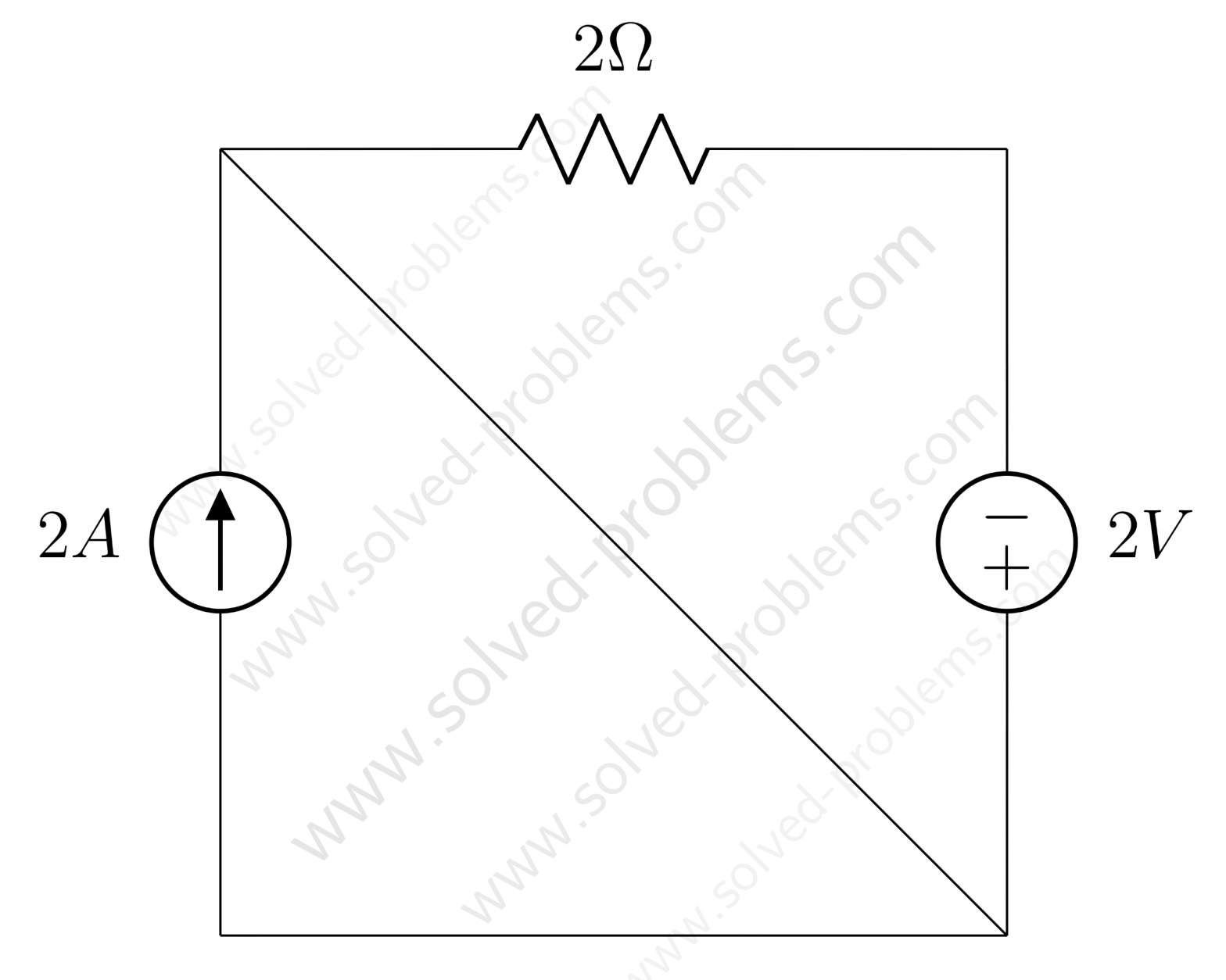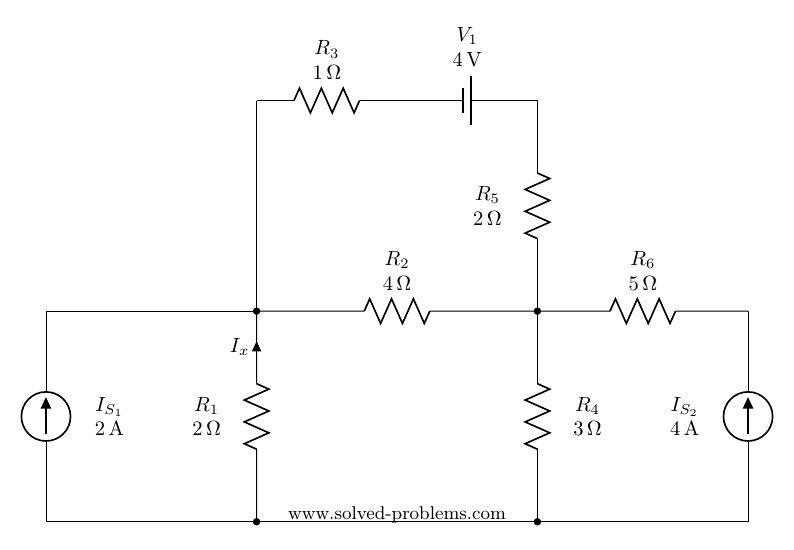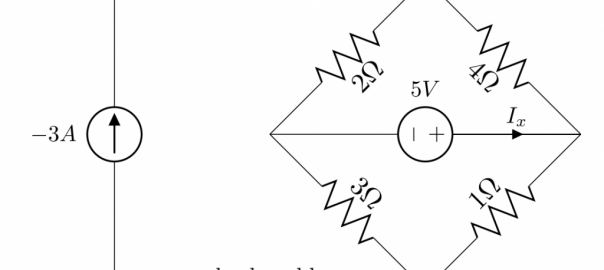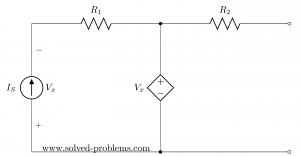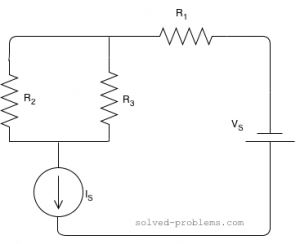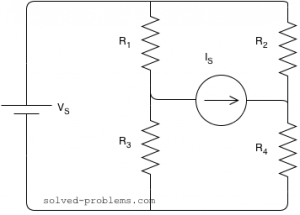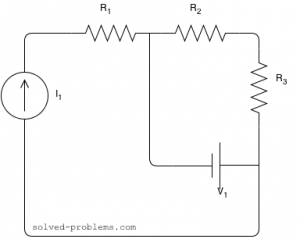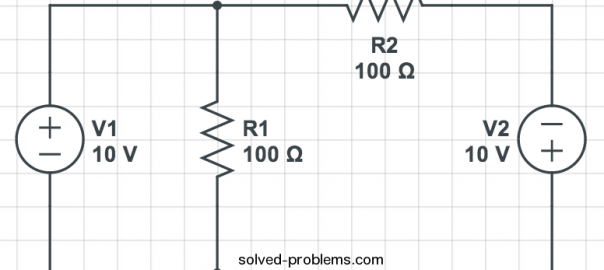A simple circuit is solved and power absorbed or supplied by each element is determined. KCL as well as Ohm’s law are used in solving the circuit. positive sign convention is used in determining element powers. It is shown and discussed how a source, here current source, can be neither absorbing or supplying power. It is also mentioned that resistors are passive elements and always absorb power/energy.
Category Archives: Resistive Circuits
Find the current using superposition.
Superposition rule is used to solve a DC resistive circuit which has two independent voltage sources and four resistors.
Mesh (Current) Analysis Problem
A circuit with four meshes solved using the mesh analysis. The circuit has two current sources, one voltage source and six resistors.
Superposition method – Circuit with two sources
Finding current by using superposition method. There are two independent sources, so we need to turn them off one by one and calculate their contributions.
Find Thevenin’s and Norton’s Equivalent Circuits
Thevenin’s and Norton’s equivalent circuits of a DC resistive circuit is determined. The circuit has an independent current source and a dependent voltage s
Solve Using Current Division Rule
A DC resistive circuit with two sources, one voltage source, one current source both independent solved using current division method.
Mesh Analysis – Supermesh
The mesh analysis used to solve the circuit which has a supermesh. After solving the circuit, power of sources determined.
Solve By Source Definitions, KCL and KVL
A DC resistive circuit consisting of one voltage source and one current source and three resistors is solved using source definition, KCL and KVL.
Find Voltage Using Voltage Division Rule
Determine voltage across and using voltage division rule. Assume that , , , and Solution: Please note that the voltage division rule cannot be directly applied. This is to say that:
Find currents using KVL
A simple circuit with two voltage sources and two resistors solved using only KVL.
